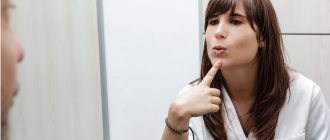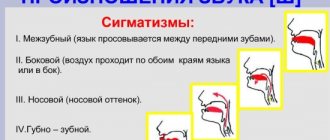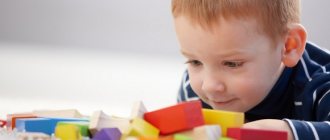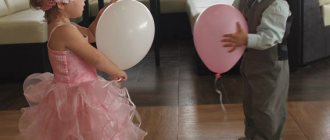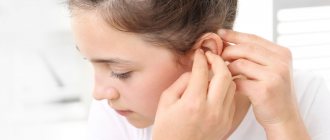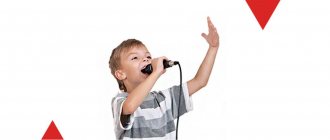GYMNASTICS AND MASSAGE FOR CHILDREN UNDER 1 YEAR OF AGE
WHAT ARE GYMNASTICS AND MASSAGE FOR BABIES
Massage and gymnastic exercises are the most beneficial and expedient way to educate a child in correct and precise movements.
During the normal development of the child, congenital hypertonicity of the flexor muscles decreases naturally, but promoting relaxation of the flexor muscles is advisable.
Means that contribute to this include
- daily warm baths,
- light stroking massage,
- stimulating the child’s independent movements associated with extension.
Timely balancing of the flexors and extensors of the upper extremities makes it possible to develop hand skill, which will give the child the opportunity to reach for an object, take it, and then, holding it, pull himself up, lifting the body, and with the timely development of small muscles, the prerequisites are created for the development of large muscles, which provides the child ability to change position.
Gymnastics and massage should be used in conjunction with all other educational measures (diet, sleep, organization of wakefulness, etc.).
GYMNASTICS FOR BABIES
Physical exercises are prescribed to every healthy child, starting from 1.5-2 months. age. By this time, the child’s body adapts to the conditions of extrauterine existence, a certain lifestyle is established, and thermoregulation is improved. There are no contraindications to prescribing gymnastic exercises and massage to a healthy child in accordance with his age and individual characteristics.
How to do gymnastics for a baby
- Gymnastics are carried out in a specialist’s office at a temperature of 20-22°C on a clean changing table, covered with a thick blanket or mattress and diaper.
- Classes are carried out once a day 45 minutes before or 45 minutes after feeding.
- The hands of the specialist (mother) should be clean, dry and warm.
- The child is undressed; his body should be warm.
- During the lesson, it is necessary to maintain a cheerful mood in the child, talk to him, encourage him to be active, smile, and use toys.
- While performing certain exercises, the specialist carefully monitors the child’s reaction.
- The child should not be overtired.
- All movements must be done rhythmically, calmly and smoothly (without violence), repeating each one 2-3 times.
- Gymnastic exercises under the supervision of a doctor can be carried out by parents themselves.
BASICS OF GENERAL MASSAGE AND GYMNASTICS FOR BABIES
In accordance with the characteristics of the development of motor activity of a child under 1 year old, groups of exercises are determined:
- exercises to develop coordination, balance,
- exercises to develop breathing movements.
For the development of respiratory activity in young children, the following is used:
- passive exercises,
- reflex exercises.
Passive exercises are performed not by the child, but by the massage therapist. They are designed to use the natural motor phase of the child’s muscles: flexion when a certain group of muscles contracts and extension when they relax. Passive exercises should not be used until the child is 3 months old, since if there is existing flexor hypertension, performing them is associated with the danger of violence against the child!
After 3 months of life, when complete balancing of the flexor and extensor muscles of the upper limbs occurs, passive movements for the arms can be gradually introduced, starting with the simplest ones and moving on to more complex ones. Balancing of the flexor and extensor muscles of the lower extremities is achieved between the 4th and 5th months of life, which makes it possible to introduce passive movements for the legs.
Reflex exercises. To strengthen the muscles of the neck and torso, you can use reflex exercises designed for movements that occur according to the type of unconditioned motor reflexes. Innate motor reflex reactions appear in response to irritation of receptors in the skin, muscles, and nervous system.
First, in the hanging position on the stomach, the child tilts his head back. After about a month (by 4 months), in the same position, his whole body begins to bend, forming an arch, open upward. This movement is an energetic stimulation and strengthening of the vestibular apparatus.
From 4 months, in a hanging position on his back, the child tilts his head forward, straining the muscles of the front surface of the body. By regularly giving the indicated positions (holding the child hanging on his stomach, on his back), you can strengthen the muscles of the neck and torso.
In the future, on the basis of these innate reflexes, it is possible to create conditioned connections in response to signal stimuli such as pulling the legs, sound signals, grasping, etc.
Exercises with help - passive-active. This includes movements that are performed by the child independently only partially, for example, sitting down when pulling the child by the arms or hands; standing with support under the arms, etc.
Active exercises are voluntary exercises that the child does independently.
Massage is one of the types of passive gymnastics. Massage can be general or local. General massage has a significant and varied effect on the child’s body.
There are five main massage techniques:
- Stroking. When stroking, the skin is freed from epidermal scales, which leads to the opening of the ducts of the sebaceous and sweat glands. This method improves breathing and nutrition of the skin (skin vessels dilate, arterial and venous circulation improves), and its firmness and elasticity increases. Up to 3 months, children are massaged exclusively by stroking. After 3 months, other massage techniques are added: kneading, effleurage. General stroking massage lasts up to 6 months. In the future, it is necessary mainly in case of disturbances in turgor and muscle tone, as well as as a rest between exercises. The massage begins with stroking. It alternates with other techniques and ends the massage. When stroking, one or both hands of the massage therapist fit tightly to the massaged surface, glide slowly, calmly, rhythmically. Stroking is always performed taking into account venous and lymphatic outflow (along the way).
- Trituration. Rubbing is aimed primarily at affecting the child’s musculoskeletal system. This technique improves the nutrition of tendons, tendon sheaths, and mucous bursae; elasticity and contractility of muscles increase. When rubbing, the skin is slightly stretched with your fingers. Not only the skin is rubbed, but also the tissues underlying it.
- Kneading. Kneading is aimed at increasing blood supply and improving nutrition of the massaged area. Mainly used for deep muscle massage. Muscles or individual muscle bundles are grabbed by the massage therapist’s fingers, slightly retracted and kneaded in different directions.
- Effleurage. Effleurage, as a special type of massage, helps reduce the excitability of peripheral nerves, improve blood supply, and, consequently, nourish the muscles. Tapping also affects deeper-lying internal organs. This technique is performed by lightly tapping individual parts of the body (richer in muscles) with the ends of the fingers of both hands. In the youngest children, this technique in the form of rhythmic patting is performed with the palmar surface of the fingers of one or the other hand of individual parts of the body, most often the back, hips, less often the back surface of the lower leg.
- Vibration. Vibration consists of transmitting uniform shocks to the body in rapid succession. This technique is used very rarely at an early age.
Possible contraindications to massage for infants
- Acute febrile conditions accompanied by an increase in body temperature. Massage promotes blood flow, which can cause the temperature to rise even more.
- Pustular, infectious-inflammatory or fungal diseases of the skin are a strict contraindication to massage, since open areas of purulent areas, as well as vesicular elements (rashes) in some infectious diseases, can be injured during massage, and the infectious agent will spread to the skin covers.
- Dermatitis, allergic reactions on the skin, which are often accompanied by the formation of oozing, which is an open wound surface. Massage, as a rule, requires the use of creams and oils, which is unacceptable on areas of affected skin. In addition, additional friction of such areas during massage can cause pain in the child and contribute to the deterioration of the local condition of the skin.
- Severe congenital heart defects with insufficient blood supply, which is manifested by shortness of breath, swelling, cough. With these diseases, signs of circulatory disorders occur in the child even at rest, and since massage is, albeit small, but still a load on the body, it will contribute to the deterioration of the baby’s general condition.
- Blood diseases (hemophilia, hemorrhagic diathesis), tendency to bleeding. Pressing on the skin during a massage can cause internal subcutaneous hemorrhages.
- Convulsive syndrome, epilepsy. In these conditions, massage is contraindicated, as it can provoke new attacks.
- Rickets during the period of exacerbation. At this stage of the disease, children are especially restless and excitable; massage as an additional stressful effect is not recommended, since a gentle regime is necessary.
- Large hernias, when internal organs (umbilical, inguinal, etc.) fall into the hernial protrusion. Massage can cause strangulation of the hernia, which will cause severe pain and may require immediate surgery.
COST OF REGISTRATION Our specialists Up
Exercise therapy for children: features, exercises and recommendations from the best specialists at the MEDSI Clinic
Table of contents
- Positive aspects of exercise therapy
- Types of exercises
- Contraindications for exercise therapy
- Features of children's exercise therapy
- Some rules for exercise therapy
- Features of exercise therapy for scoliosis in a child
- Approximate complex for preschoolers
- Sample complex for schoolchildren
- Advantages of exercise therapy at MEDSI
Today, not only adults, but also children suffer from various problems with the spine. Diseases can be either congenital or acquired. The condition of the musculoskeletal system is negatively affected by both a sedentary lifestyle and incorrect body position during sleep and wakefulness. The lack of physical activity can easily be compensated with the help of exercise therapy (physical therapy). A special set of exercises makes it possible to eliminate minor curvatures and a number of other problems. The classes are reminiscent of yoga, conducted carefully, but with maximum efficiency, combined with proper breathing. Exercise therapy is not only exercises, but also water procedures, walking and even outdoor games. By exercising regularly and under the supervision of an experienced specialist, you can achieve pronounced results. Physical therapy for children is very useful and absolutely safe.
Positive aspects of exercise therapy
Physical therapy not only makes you move more, but also plays a developmental role. By doing the exercises, the child gets to know the world around him and learns to relate himself to it.
Classes contribute to:
- Harmonious development of the musculoskeletal system
- Correct formation of posture and its correction
- Strengthening muscles
Special exercises develop strength and endurance, improve coordination of movements.
The positive aspects of exercise therapy also include opportunities for:
- Strengthening the immune system
- Reducing the body's susceptibility to pathogens of various diseases
- Quick adaptation to school loads
- Normalization of the body's functioning
- Improved appetite and sleep
Important! A set of exercises is always selected individually and only by a specialist!
Types of exercises
Therapeutic physical education for children is not a simple gymnastics complex. Exercise therapy can include any active recreation. Classes are often held in a playful way. This is due to the high effectiveness of the complexes and the fact that they are interesting for children and form sustainable motivation.
All exercises are divided into 2 groups:
- Are common
. They are used to strengthen the body - Special
. Such exercises are aimed at improving the performance of a specific system. Exercise therapy for fractures, for example, allows you to quickly restore mobility and stimulate accelerated healing processes. Classes are provided for flat feet and other pathologies
Exercises can be:
- Active
- Passive
- Respiratory
- Stretching
- Relaxing
- Coordination, etc.
Passive exercises are relevant for infants who cannot do gymnastics on their own. All actions (flexion, extension, etc.) are performed by a specialist.
Contraindications for exercise therapy
Physical therapy for children is not carried out if:
- Malignant formations
- Frequent bleeding
- Acute pathologies
- Heart disease and rhythm disturbances
- High temperature
You should interrupt classes or temporarily refuse to start them even if your child has a common cold.
The doctor will tell you about all contraindications. He will determine whether your child can practice right now or whether it is better to postpone gymnastics for a certain period of time.
Features of children's exercise therapy
Therapeutic physical education for children has the following features:
- It is carried out mainly in a playful way
- Includes exercises appropriate to the age of those involved, their level of physical development and mental state
- It is aimed at the development of all systems and organs, allows you to normalize the functioning of the heart and blood vessels, strengthen the immune system, improve posture, etc.
Parents make decisions about classes. The doctor can only recommend exercise therapy for the child.
Some rules for exercise therapy
Classes are held:
- Only after visiting a doctor and examination
. For severe pathologies of the musculoskeletal system, for example, physical therapy alone is not enough. The child will definitely be prescribed other therapy (medications, physical therapy, etc.) - Experienced specialists
. They must assess the child’s condition - With a gradual increase in load
and control. The specialist ensures that the exercises do not cause significant discomfort and pain. - At least 45-60 minutes
after eating - In well-ventilated areas
- With the obligatory inclusion of breathing
and relaxation exercises, warm-up - Course
. Its duration is determined in advance and only by a doctor. If necessary, the course can be repeated several times throughout the year.
Features of exercise therapy for scoliosis in a child
Incorrect posture is a problem for many modern children. This is due to the fact that they spend a lot of time in front of computers, and not in the fresh air, running and playing. If the pathology has not yet started, you can return the child to good posture. To do this, you should perform special exercises.
For thoracic kyphosis, for example, the complex includes exercises to strengthen the muscles of the shoulder girdle and chest. For a “flat back”, special exercises are also selected. They are aimed primarily at strengthening the muscles of the back and shoulder girdle.
With scoliosis it is very important:
- Increase spinal mobility
- Develop coordination of movements
- Stretch the spinal column
The effectiveness of classes is determined not by their intensity, but by their regularity! If you perform the exercises only 1-2 times a month, there will be no effect. Typically, physical therapy for children is carried out several times a week (at least 4).
Approximate complex for preschoolers
Classes for preschoolers are usually conducted according to the following scheme:
- Warm up. As a rule, it consists of walking with high knees and walking on your heels and toes.
- Swing your arms to the sides while raising your toes
- Exercises with a gymnastic stick: lifting it from the floor with outstretched arms and returning to the starting position
- Swing your legs while lying on your stomach
- Exercise "swallow"
- Stand on one leg with arms out to the side
A gymnastic complex is often performed using sports equipment such as a ball, jump rope, or hoop.
Sample complex for schoolchildren
Classes for schoolchildren are conducted according to the following approximate scheme:
- Warm-up
- Lowering and raising arms apart with a ball
- Lifting the ball behind your head and lowering it
- Clasping your hands behind your back
- Back arch while lying on the floor
- Rounding the back while kneeling with emphasis on the hands
- Leg and shoulder raises while lying on your stomach
- Exercise "bicycle"
At the end of the main complex, schoolchildren perform breathing exercises.
Advantages of exercise therapy at MEDSI
- Experienced specialists
. Therapeutic physical education for children in Moscow at MEDSI is carried out by professionals who are constantly trained and improved, mastering new techniques and methods - The use of complexes
that have already proven their effectiveness. By exercising, a child can improve blood circulation in the muscles, restore or increase joint mobility, relieve spasms, get rid of pain and discomfort in the spine - A complex approach
. Exercise therapy can be prescribed in conjunction with physiotherapy, massage, and other methods of treating a number of diseases of the musculoskeletal system - Individual approach
. Before prescribing exercise therapy, a specialist will definitely examine the child. This will allow you to select the appropriate complex and achieve its maximum effectiveness.
If you want to enroll your child in physical therapy for children, find out the price of the service, and the specifics of the classes, call +7 (495) 7-800-500.
